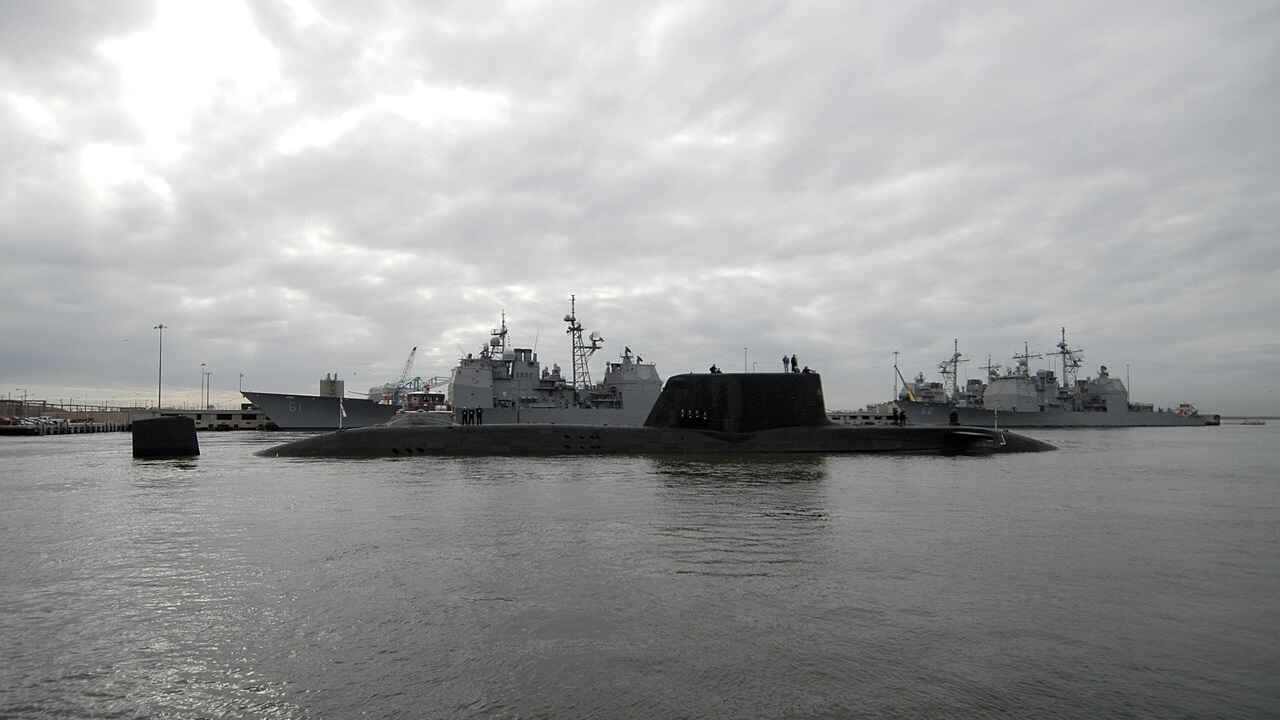
The Royal Navy Is Playing Cat and Mouse with a Russian Spy Ship
It was believed Yantar was loitering over undersea cables.
For the second time in just weeks, an alleged Russian spy ship has entered UK waters, the British Ministry of Defence (MoD) announced on Wednesday. The Royal Navy will continue to track the movements of the Russian vessel, which entered the English Channel earlier this week.
The Russian vessel Yantar had been “warned off” in November by the Royal Navy’s nuclear-powered attack submarine HMS Astute, which surfaced close to the spy ship off the coast of the UK. According to the MoD and British news outlets, Yantar had been loitering over British undersea cables—which prompted a stern warning from Defence Secretary John Healey.
“We see you,” Haley said while addressing the House of Commons, in a message directed to Russian President Vladimir Putin and the Russian government.
“Let me be clear: this is a Russian spy ship used for gathering intelligence and mapping the UK’s critical underwater infrastructure,” the secretary added.
Healey told the UK lawmakers that this week the Royal Navy’s Type 23 frigate HMS Somerset and River-class offshore patrol vessel HMS Tyne have been monitoring Yantar while it is in UK waters.
“I changed the Royal Navy’s rules of engagement so that our warships can get closer and better track the Yantar. So far, the ship has complied with international rules of navigation,” Healey continued.
Surprising the Spy Ship
While the Royal Navy’s surface vessels have been monitoring the movements of Yantar, the crew of the spy ship likely received quite the surprise when Healey ordered HMS Astute to surface in its close proximity. It was believed Yantar was loitering over undersea cables.
It is almost certain the Russian crew had no idea the submarine was in the area. The Royal Navy’s Astute-class boats were developed to utilize state-of-the-art anti-acoustic technology. Each hull is fitted with more than 39,000 acoustic tiles that mask the vessel’s sonar signature and allow the submarines to glide through the water almost silently.
The little noise the boats give off has been compared to that of a “baby dolphin.”
It was only this week that Healey acknowledged the submarine was deployed to track the spy ship and to give its crew a fright!
“I also wanted to confirm to the House that I authorised a Royal Navy submarine, strictly as a deterrent measure, to surface close to Yantar to make clear that we had been covertly monitoring its every move. The ship then left UK waters without further loitering and sailed down to the Mediterranean,” Healey explained.
Earlier this week the Russian ship was back and was being closely monitored while transiting the English Channel.
The Cables Beneath the Sea
The significance of undersea cables cannot be overstated. While there has been much focus on the importance of satellites in orbit, 99% of all transoceanic data traffic travels via undersea cables. That includes Internet communications, phone calls, and text messaging. There are several factors at play, but the most important is that the route is far faster than satellite transmissions, by up to eight-fold.
There are 380 underwater cables in operation around the world, spanning a length greater than 1.2 million km (745,645 miles).
As so much data flows through the cables, the infrastructure is a target for espionage in both peacetime and during war. In fact, following the start of the First World War in August 1914, one of the first acts by the British was to cut Germany’s undersea telegraph cables. Berlin was left with just one cable, and even that was essentially under British control. Any message sent through it was intercepted and read by the British.
Just last month, the Estlink2 undersea cable between Estonia and Finland suffered an unplanned failure, and while it has since been deemed accidental, the UK has taken the presence of the Russian spy ship over its undersea cables seriously. All of NATO has pledged to boost the protection of such vital communication conduits.
The UK has also launched Nordic Warden, which the MoD described as “an advanced new AI system to help monitor the Russian shadow fleet and safeguard undersea infrastructure.”
It will draw on a range of data sources to assess potential risks to critical infrastructure posed by ships, while the MoD further explained that it would be employed to monitor any Russian vessels that are suspected of being part of “Putin’s shadow fleet of ships used to attempt to bypass international sanctions–and help fund Russia’s illegal war in Ukraine–by moving Russian oil and gas to potential buyers.”
Russian vessels near the UK can expect to be tracked by air and sea—and that will likely include the Royal Navy’s attack submarines.
“My message to President Putin is clear,” said Healey. “We know what you are doing, and we will not shy away from robust action to protect Britain.”
About the Author: Peter Suciu
Peter Suciu is a Michigan-based writer. He has contributed to more than four dozen magazines, newspapers, and websites with over 3,200 published pieces over a twenty-year career in journalism. He regularly writes about military hardware, firearms history, cybersecurity, politics, and international affairs. Peter is also a Contributing Writer for Forbes and Clearance Jobs. You can follow him on Twitter: @PeterSuciu. You can email the author: [email protected].
Image: Wikimedia Commons.